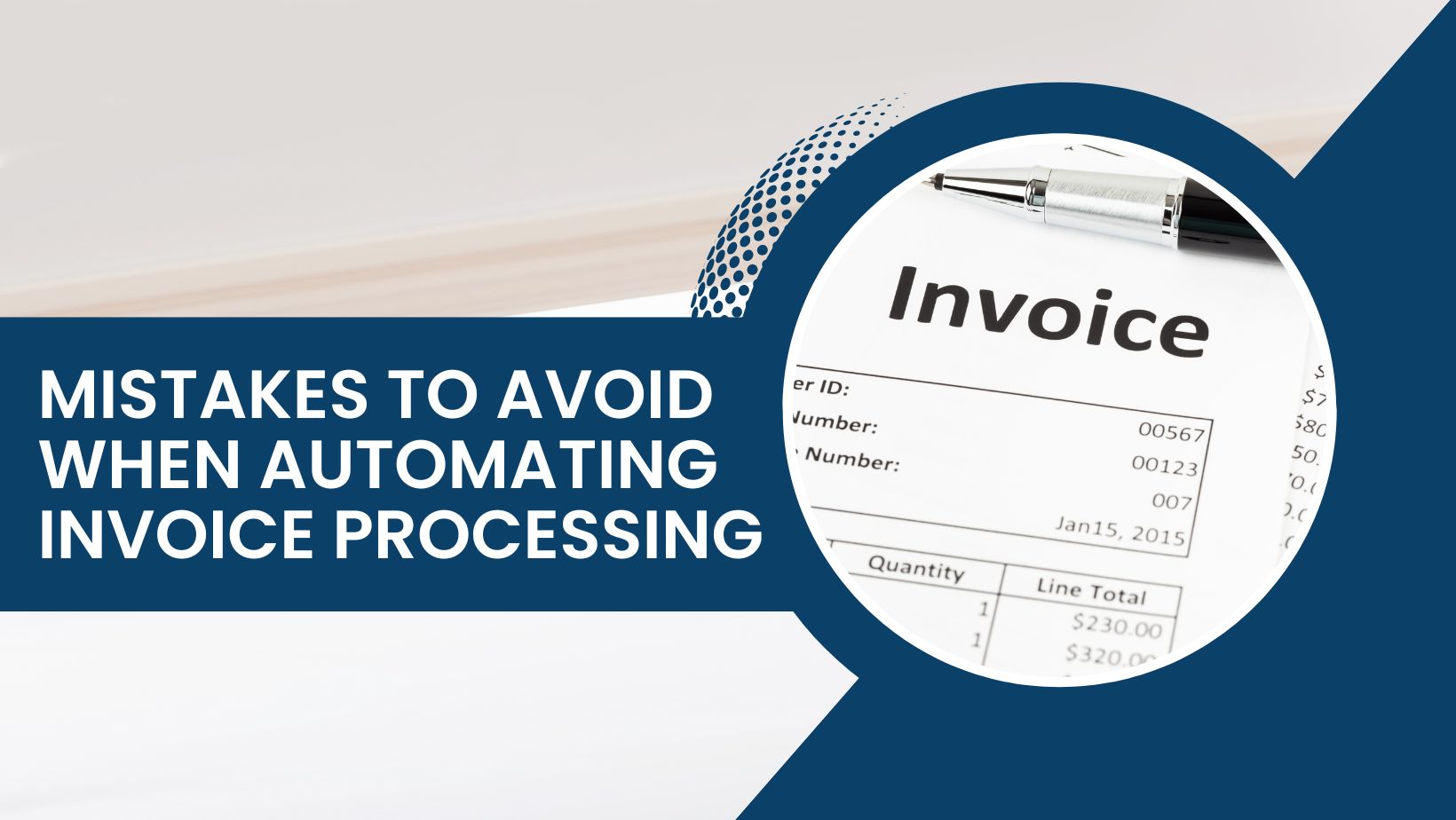Common Mistakes to Avoid When Automating Invoice Processing
In the world of businesses, time is money and when it comes to managing invoices, every minute spent on manual processing can add up to hours of valuable productivity lost. That’s why more and more companies are turning to automation to streamline their invoice processing.
Invoice automation refers to the process of automating the tasks associated with invoice processing, such as data capture, verification, approval, and payment. This can be achieved by using software tools that automate the various steps involved in invoice processing. However, like any other technological advancement, implementing automated systems requires careful planning and execution to ensure success.
If you’re considering automating your invoice processing, you’re on the right track toward efficiency and cost savings. But before you dive headfirst into the world of automation, it’s important to be aware of common mistakes that can hinder your progress, leaving you with more problems than solutions.
This blog post will guide you with some common mistakes to avoid when automating your invoice processing. By understanding these challenges and taking proactive measures to sidestep them, you’ll be better equipped to utilize the power of automation and optimize your invoicing process for maximum efficiency.
4 Common Invoice Automation Mistakes to Avoid
Here are some common mistakes to avoid while automating invoice processing:
Insufficient Planning and Preparation
Before diving into automation, the right planning and preparation are important. Hence, make sure to invest some time to analyze your current invoice processing workflow, set clear goals and identify potential risks associated with automation. This will help you avoid unnecessary costs down the line.
Selecting Incompatible Software
Each automation software comes with its own unique features tailored to address specific problems effectively. Therefore, it’s crucial to choose the right software that aligns with your requirements and goals. Failure to do so may result in the selection of suboptimal software which may ultimately lead to unresolved issues and increased costs for additional integrations. As a business, it is essential to verify how much automation software can truly improve your current account payable process.
Underestimating Employee Training
Failing to provide training to your employees can result in confusion regarding the functionality and usability of the invoice processing software, which can ultimately hamper their productivity. Hence, make sure to provide comprehensive training sessions to familiarize them with the new automated tools and overall workflow.
Not Testing the Automation Tools
Every automation software has its own distinct features and limitations particularly when it comes to integrating with existing financial processes and software. Hence, it’s important to test the invoice processing and integration capabilities of the software within your current workflow. Select the software that performs the best and ensures smooth integration.
Businesses should carefully consider invoice automation potential pitfalls and work with experienced vendors or consultants to develop a comprehensive plan for implementing and maintaining an efficient system.
Ways to Automate Invoice Processing
Here are two ways in which you can automate invoice processing:
1. Choose An Invoice Processing Software
Invoice processing software has revolutionized the accounting arena by facilitating labor and cost savings. Today, automated invoice processing software has become absolutely essential for businesses as it helps streamline the accounts payable processes. Listed down are some of the best invoice processing software you can consider for your business:
- Resolve
- Yooz
- MineralTree
- Tipalti
- Bill.com
2. Outsource Invoice Processing to a Third-Party Service Provider
Involving invoice processing outsourcing services is a valuable option for companies, lacking the right expertise and resources to invest in an automation tool. By outsourcing invoice processing to an experienced service provider, businesses can improve efficiency, accuracy, and cost-effectiveness.
Here are some of the benefits of outsourcing invoice processing:
- Access to Specialized Expertise
Outsourcing partners generally possess expertise in invoice processing gained through years of experience in handling financial processes. More so, these professionals are well-versed in the latest technologies and best practices for invoice processing. By leveraging their expertise, you can benefit from their efficiency and accuracy in handling your invoices.
- Cost Savings
Invoice processing outsourcing can be a cost-effective solution for companies that may not have the resources to invest in an in-house automation system. Outsourcing eliminates the need to hire and train new staff, purchase expensive software, and maintain IT infrastructure.
- Scalability
Outsourcing allows companies to quickly scale their invoice processing capabilities up or down as needed. This can be especially helpful for businesses with seasonal or fluctuating invoicing volumes.
- Improved Accuracy and Speed
Invoice processing outsourcing companies have the experience and expertise to accurately process invoices quickly and efficiently. This can result in faster payments and improved relationships with vendors.
- Reduced Errors
By outsourcing invoice processing, you can significantly reduce the risk of errors in data entry and calculations. This can result in fewer payment discrepancies, reduced financial risk, and improved vendor satisfaction.
Advantages of Invoice Automation
Invoice automation helps reduce the risk of duplicate or inaccurate invoices and saves your time and effort. Adding on, here are some more advantages of automating invoice processing:
Increased Efficiency
Automating the invoice process accelerates time-consuming tasks such as data entry, sorting, and matching invoices. Hereby, it streamlines the entire process, reducing the time it takes to process invoices. This efficiency boost enables businesses to allocate resources more effectively and focus on strategic activities.
Improved Accuracy
Manual processing is more susceptible to errors as it involves data from different departments. In such cases, missing invoices, calculation mistakes, and process errors are prone to happen. Automation helps reduce such instances facilitating more accurate invoices.
Enhanced Transparency
Automated invoicing offers real-time visibility into the invoicing process, allowing businesses to track invoices and payment status more accurately. Enhanced transparency provides easy monitoring and also facilitates an easy review of transactions whenever required. It helps you rectify issues in real-time. Lack of transparency may lead to inefficiency, improper accruals, and under-reported expenses.
Reduced Costs
Automation reduces the cost of invoicing by eliminating manual processes, reducing errors, and improving overall efficiency. Once the errors are reduced and submissions are on-time, the costs incurred on penalties and late fees also get reduced.
Improved Customer Satisfaction
Faster and accurate invoicing leads to improved customer satisfaction, as customers receive invoices and payment reminders on time. Wrong invoices and delayed payments lead to strained relations with the customer, automation can help you rectify this issue.
Increased Security
Automated invoicing systems are more secure than manual systems as they use encryptions and may also have passcodes to securely transfer data. This reduces the risk of invoice fraud and other security threats.
Conclusion
Automation can significantly help drive efficiency and accuracy in your invoice processing workflows. However, to make the most of it, it’s important to be wary and avoid the mistakes listed above in the blog. This will help you with streamlined, efficient, and accurate invoice processing that can ultimately help you achieve your financial goals.





